The content of the article
Why do the leaves of cucumbers turn yellow. What to do? With such questions, gardeners turn to search engines when the problem is already clearly visible. But wait, raise a panic. After all, often everything is fixable, and cucumbers can still be saved.
The only difficulty is an accurate diagnosis of why the leaves turn yellow. Sometimes it is difficult to determine the real cause. Well, you have to act by exclusion and periodically turn on the head. Then everything will work out for sure.
Below we consider the most common options for changing pigmentation and tell you what to do in this situation.
Wrong watering
Since childhood, many people know that cucumbers are very fond of water. So they pour to stupor and how many do not mind. But such an elementary procedure as watering should be carried out according to all the rules.
This plant is thermophilic. In the regions of origin of cucumbers, there are rarely cold rains. Mostly warm water pours from the sky. So our cucumbers need to be drunk with warm water. And then some will lower the pump into the well and let's pump ice flows into the beds. Try to stand under such a shower yourself. Hardly like it.
So the cucumbers turn off the small feeding roots so as not to get cold. But leaflets and fruits require water. It turns out that even being in an ice slurry from soil and water, the plants dry. The leaves turn yellow with this care quickly.
Another situation. Water for irrigation is warm, but not enough. Instead of a high-quality drink 3 times a week, the hosts every day little by little squirted from a watering can. The topsoil is moist all the time. And at a depth of 8-12 cm, where the bulk of the roots are located, there is dryness. It turns out dried cucumbers again.
Or the other extreme. Cucumbers are watered with warm water, often a lot. Well, it would seem, what else is needed? Air access to the roots is necessary. They cannot work constantly for wear, they also need to be periodically ventilated. But what if the “legs” in a warm swamp swim?
All sores of the root system begin, rot insidious attack. The roots gradually die off. The leaves turn yellow, the owners think that the plants lack water, and pour even more. The problem is compounded.
What to do? To start, water correctly. No one will tell you the exact amount of water per plant or frequency. And do not listen to all these "25 liters of water per bush at each watering." How can advisers know what the weather or climate is in your area? What kind of soil and under what conditions your cucumbers grow - they also do not know.
The best guideline is your bed. They came, parted the leaves, looked. If it is not clear, then it is possible to pick out a strawberry. Is wet? Set aside to water! Dry? So it's time to give the cucumbers a drink. That is all science.
Sunburn
Continuing the theme of water, we will talk about a great error. Absolutely all sources categorically forbid watering cucumbers in the heat from above. Ostensibly sprinkling provokes a sunburn and massive yellowing of the leaves.
Sorry, but yellowing leaves provokes your negligence and unwillingness to work with the brain. Look at your watch cucumbers at 14. What does it look like? That's right, on saggy rags. This sun evaporates the remaining moisture from them, and then it dries to the state of straw. Hence the burn.
What to do? Save! Urgently help the cucumber plantations to endure solar bullying! Right on top of the leaves by sprinkling it is necessary to refresh the planting. This reduces the temperature of the sheet, saturates it with liquid and increases the humidity around.
And do not talk about drop-lenses.If the blades are saturated with water, and their temperature is low, then your scary lenses need a lot of effort to damage the surface of the sheet. By the way, after the rain, too, the sun often fries. How many plants blazing from lenses have you seen in your life?
Pests
These little enemies suck out all the nutritious juices from the leaves of cucumbers, gnaw the root system, and eat stems. As a result, the plant becomes weak, a lack of nutrition is manifested, the leaves turn yellow.
Additional feeding will not work. First you need to identify the insidious guests, then get rid of them, and only after all help the cucumbers recover.
What to do? Each type of pest needs its own control method. No doubt, it’s possible from the bottom of the heart to put a decent dose of an insecticide on them. But how then to eat cucumbers? After all, they quickly ripen, they will not have time to get rid of the poison for sure.
Exit 3, both harmless to humans and animals:
- Use all kinds of decoctions and infusions of strongly smelling natural ingredients. These are onion peel, tansy, mint, valerian, marigold, garlic husk. You just need to periodically spray the affected cucumber leaves with a diluted liquid. It is advisable to thoroughly moisten the lower side of the leaves. It is there that the largest congestion of intruders is observed.
- Traps. It is possible with poisonous bait. The pests will eat up and safely fold their legs, and cucumbers just do not bite. Do not want to use poison, so just collect insects in traps and give them to your neighbors or your hens. Take out from the site and destroy. Bury it very deep in the ground. Full of ways.
- Novelty in the market of insecticides. With the prefix bio. It can be used to get rid of all types of harmful insects. It is a conglomerate of spores of a fungus and a predatory nematode. A small predator attacks pests and infects them with a fungus. That, in turn, quickly grows in the internal organs of the insect and kills it. Everything about everything takes from 4 hours to a day.
The only minus of option 3 is strict adherence to the instructions. It clearly defines the conditions and storage time of the drug, as well as the temperature range in which the bioinsecticide works most effectively.
Cold
The banal reason is temperature jumps during the day. For example, hell stands during the day, and it is already freezing at night. This usually happens in August. The roots of cucumbers cease to function normally in cooled ground. And overgrown tops and poured fruits require nutrition in the usual dose. What remains to the plant? That's right, take a supply of nutrients from the leaves. The blades begin to turn yellow, then they dry and die.
Enhanced top dressing will not bring the proper result. No matter how much food is brought into the soil, the cucumber is not able to absorb it.
What to do? Do foliar top dressing, preferably with nitrogen, and build up new roots. This is done very simply. First, almost all the lashes are dug up to a length of 30 cm. It is necessary to sprinkle the whole thing with moist, loose soil. It is recommended that you first water the place of digging with a solution of the root stimulant. This will allow the cucumber to quickly grow new roots, which will help the bush absorb the proper amount of nutrition.
And the leaves will need to spend 2 top dressing, with an interval of 5-7 days. For this, a matchbox of ordinary urea (without top) or 2 tbsp. l pharmaceutical solution of ammonia. Mix the resulting liquid well and spray planted cucumbers from the heart.
We advise you to carry out such dressing early in the morning or in the evening. Then the leaves and shoots will have time to absorb most of the fertilizer.
Power shortage
By the way, about fertilizers. Their lack can also be the cause of yellowing of cucumber leaves.Some gardeners strongly oppose the use of chemistry in their infield. Of course, biological liquid green manure is a good thing. Cucumbers take it with a bang. But for the normal growth and development of the menu should be full.
Agree, it’s hard to always eat only one nitrogen. Other trace elements are also needed. For example, potassium, manganese, iron, boron, phosphorus, molybdenum, zinc. In small quantities, but still a cucumber without them will not be able to exist normally. And with natural fertilizing, a person will not be able to provide the right amount of nutrition. And on one nitrogen from the greens, the plants will be loose, watery and the fruits will grow tasteless. The leaves will first be lush, green, but not for long. Then they quickly lose their attractiveness and turn yellow.
What to do? To feed. We go to the store. We choose any complex mineral fertilizer. We carefully read the content of trace elements. We choose where there is less nitrogen and more other substances. We buy, we bring home. There we carefully read the instructions for use, especially the manufacturer’s recommendations. We strictly follow all the requirements.
We intentionally do not give here the dosage and frequency of use of mineral fertilizers. Because each complex of microelements has its own, and something cannot be guaranteed remotely. But believe me, your cucumbers will answer you with such care thanks, a large harvest and beautiful green leaves.
Disease
This is the most common reason for yellowing cucumber leaves. None of the above species does such harm as spores of pathogenic fungi and pathogenic bacteria. They lurk your plants at every step and stage of development.
It all starts with contaminated planting material and spoiled soil. Then pests bring various viruses on their paws. Cool, wet weather provokes fungal growth. Bacteria from the last year may remain in the greenhouse or the greenhouse on the supports and walls. You can list all the dangers for a long time. Describe the method of dealing with each disease - the book is not enough.
What to do? Follow general guidelines. This alone increases the chances of your cucumbers not to discard the skates (yellow leaves) at times.
Before sowing seeds in soil or seedlings, they should be decontaminated. Better than a strong hot solution of potassium permanganate have not yet come up with anything. Planting ground is cleaned of bacteria by deep freezing or by calcination in the oven.
In the greenhouse (greenhouse), at least the topsoil should be replaced every year with a new one. If it is impossible to do this, you should certainly spill the earth with potassium permanganate or a solution of phytosporin. Arcs, frames, supports, wall and ceiling materials must be treated with a fungicide solution or at least fumigated with a sulfuric smoke bomb. Tobacco copes well, too.
The best protection against diseases and fungal rot is prevention:
- Strict adherence to crop rotation. Many neglect this, but in vain. Bacteria in the soil tend to accumulate. And the constant, from year to year, planting of melons in one place is an indirect cause of yellowing of leaves.
- Periodic inspection of cucumbers for suspicious spots or streaks. And then most gardeners begin to beat in the drums only when the cucumbers signal mass yellowness of burdocks.
- Regular preventive spraying of bushes with any fungicide of biological origin. Modern industry offers a great variety of them. We will not call here, so as not to advertise, but if desired, you can find the name and instructions.
Biofungicides are absolutely harmless to humans, animals and insects. When using them, gloves are not even required. And the benefits are invaluable.
If, nevertheless, they missed and the disease had already begun its victorious procession, then quickly get rid of the ailing cucumber or quarantine it. It is possible that the remaining bushes have not yet had time to become infected. But it’s better not to risk it.
The affected plant must be pulled out with the root, taken out of the site and burned. The soil under it should be decontaminated immediately. Such a measure will allow you to sleep peacefully.
After reading our article, you will no longer care about the question of why the leaves of cucumbers turn yellow. What to do? “You know too.” Take a closer look at your plants and good harvests.
Video: what to do so that the leaves of the cucumbers do not turn yellow

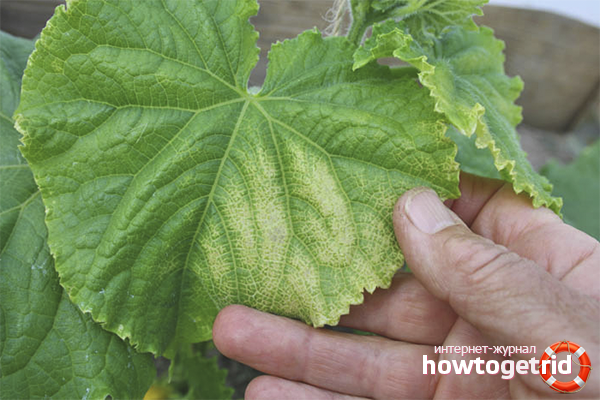


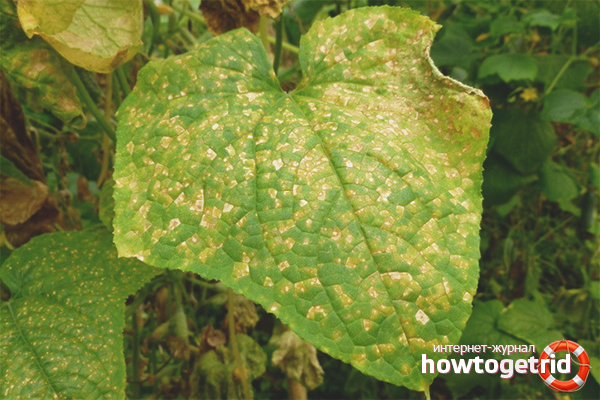
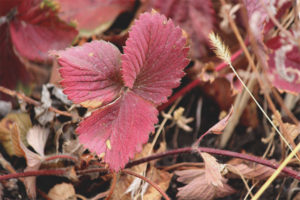
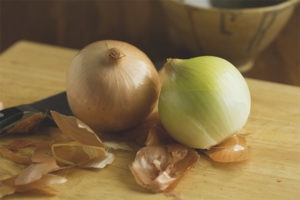
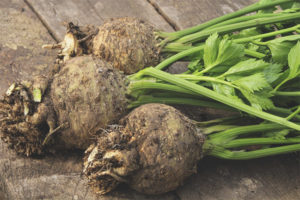
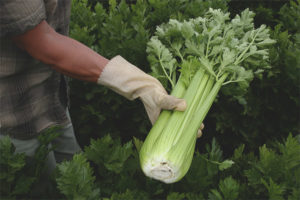
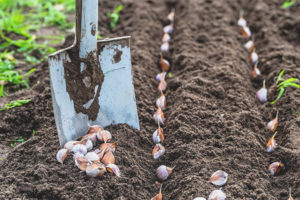
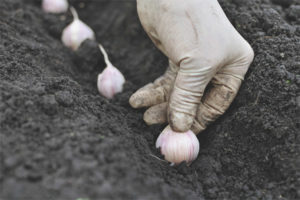
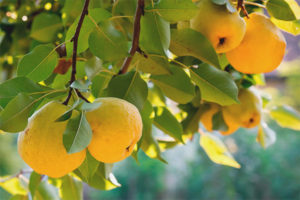
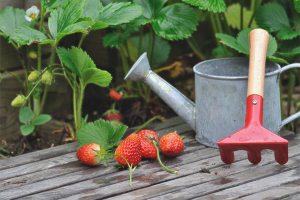
Submit